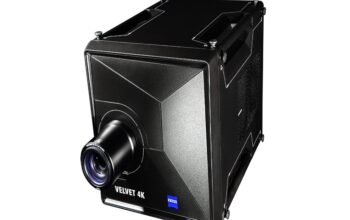Hexagon Manufacturing Intelligence division (Chiyoda-ku, Tokyo; President: Masaki Konno) announced that the Department of Radiation Science and Technology, School of Health Sciences, Faculty of Medicine, Tokushima University, (Tokushima City, Tokushima Prefecture, Japan; Minoru Sakama Laboratory) (hereinafter referred to as “Tokushima University”) and Helical Fusion Co., Ltd. (Co-founders: Takaya Taguchi, Junichi Miyazawa, and others) (hereinafter referred to as “Helical Fusion”) have been using “MSC Apex” for the generation of the MSC Nastran input data in 3D neutron transport Monte Carlo simulation calculations of next-generation helical-type nuclear fusion.
Under the joint research programme of the National Institute for Fusion Science, Japan, where a helical-type plasma experimental device is located, Tokushima University has performed 3D neutron transport calculations for an advanced design blanket of a helical-type nuclear fusion reactor to evaluate TBR (Tritium Breeding Ratio) in an advanced design blanket of a helical-type fusion reactor. They began working together on this 3D neutron transport Monte Carlo simulation computation, or PHITS calculation algorithm, in July 2022 with Helical Fusion.
It is crucial to precisely represent the target structure in the computational domain in radiation transport analysis in order to appropriately assess neutron transport in advance. High-resolution renderings of the next-generation helical-type nuclear fusion reactor by Helical Fusion are necessary for this study. However, it is very challenging to faithfully describe intricate design structures in the PHITS calculation space, such as a helical spiral. In order to create MSC Nastran input data for importing into the PHITS calculation algorithm, Tokushima University employed “MSC Apex Modeller” to extract 3D CAD data from the next-generation helical-type nuclear fusion reactor. To obtain the input data in MSC Nastran input data format, 3D CAD data was imported into MSC Apex Modeller, geometries were adjusted, and the solid mesh was created. The PHITS calculation code was then loaded with the file output by MSC Apex, and the calculation was successful.
Prior to employing MSC Apex, the traditional approach was unable to process CAD data. As a result, they were unable to handle the data in the GUI or deal with mistakes like intersections produced during meshing. However, MSC Apex’s many geometry editing and solid meshing features enable users to visually modify geometries with sophisticated tools like “Vertex/Edge Drag” and discover junctions and other mistakes in the GUI.
In radiation transport simulation analysis, workflows to import the data of complex structures such as helical-type nuclear fusion reactors and curved structures such as NURBS, including the human body, into the radiation transport calculation domain are not well known, according to Professor Minoru Sakama of the Department of Radiation Science and Technology, School of Health Sciences, Faculty of Medicine, Tokushima University. We anticipate that MSC Apex Modeller, a cutting-edge solid meshing programme, will be utilised more frequently and that new radiation-related problem solutions will emerge in the future.
Click on the following link Metrologically Speaking to read more such news about the Metrology Industry.









